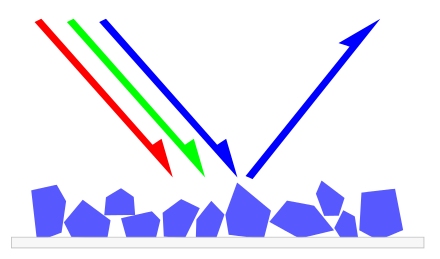Molecules of Color
Pigments
Pigments appear the colors they are because they selectively reflect and absorb certain wavelengths of visible light. White light is a roughly equal mixture of the entire spectrum of visible light with a wavelength in a range from about 375 or 400 nanometers to about 760 or 780 nm. When this light encounters a pigment, parts of the spectrum are absorbed by the molecules or ions of the pigment.
Why is a blue pigment the color blue?

A wide variety of wavelengths (colors) encounter a pigment. This pigment absorbs red and green light, but reflects blue, creating the color blue.
Photosythetic Pigments of Color
| Beta Carotene | Zeaxanthin |
| Chloropyll | Pheophytin |
| Astaxanthin |
See also: